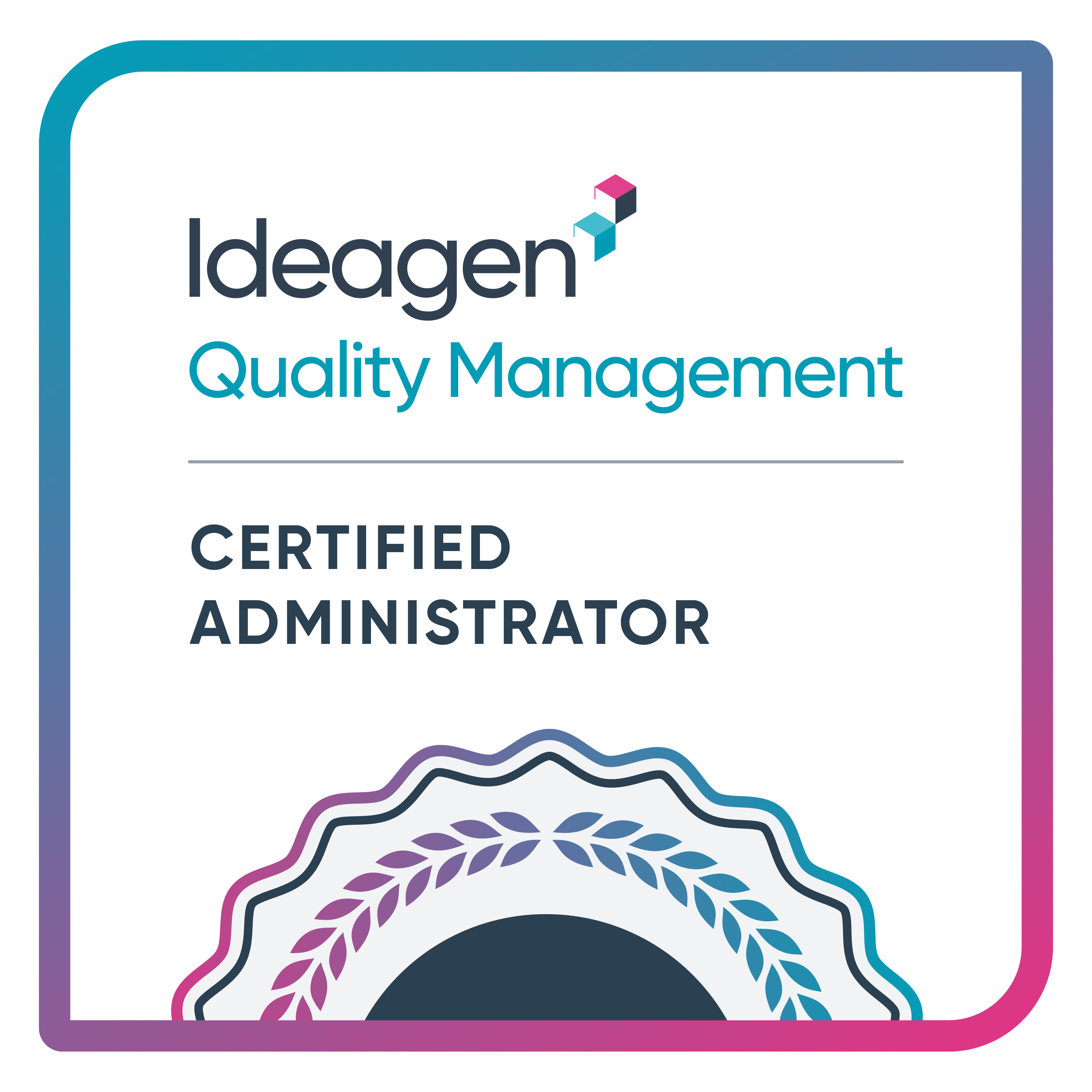Looking for help?
Common queries
Send us feedback
We'd love to hear your thoughts on features, usability, or what you love about Ideagen Luminate.
CAPA for ISO 13485: medical devices

![]() Aaron Hoare
Aaron Hoare
Effective CAPA management is essential in the medical device industry, with corrective and preventive action a core pillar of ISO 13485. ISO 13485 is the international standard for demonstrating a commitment to quality, and the importance of CAPA is clear throughout the standard – not to mention it having two dedicated clauses, 8.5.2 and 8.5.3, for corrective and preventive action respectively.
So, in simplest terms: CAPA management for ISO 13485 is essential, and by extension is important for all types of medical device organization. Meeting the demands of ISO 13485 would be impossible without sound CAPA management.
Without being firmly in control of your corrective and preventive actions, you open up your medical device quality management system, and your entire organization, to intense scrutiny and avoidable risk. Not to mention, opening up patients to potential harm.
Working to eradicate non-conformances and preventing them from reoccurring is central to pursuing continuous quality improvement, and offers many key benefits. This includes:
- Reduction in number of defects, reworks, and out-of-specs
- Reduction in costs owed to fewer defects, reworks, and out-of-specs
- Protected reputation as your devices rarely fail quality controls
- Compliance to the demands of regulatory bodies is made simple
- Operational processes are streamlined and more efficient
- High standards of patient safety are upheld
- Getting things right first time, not correcting mistakes after the damage is done
Effective, repeatable processes to put things right, and keep them right should always be the goal for your quality team. Inadequate medical device CAPA management and quality standards accounts for the vast majority of FDA 483 submissions – you can find out more about the most common FDA 483 observations across the life sciences (medical devices included) in our recent article on the subject.
Struggling with your current medical device CAPA system or to meet the demands of ISO 13485? Read on for our introduction to managing CAPA in the med device industry, or dive deeper by downloading our whitepaper on ISO 13485 CAPA below.
Structuring an ISO 13485 CAPA system for medical devices: the 4 ‘I’s
You should look, if you haven’t already, at the implementation of a closed loop CAPA methodology. Without this, it will be very difficult to deliver the standardized approach to your ISO 13485 CAPA management system for medical devices that you will need.
How many individual steps you have and the complexity of your documented medical device CAPA system is ultimately up to your quality team lead(s). This will obviously depend on factors like the size of your organization, or how many different devices you are involved with. However, several core ingredients should exist. We recommend you follow a “Plan – Do – Check – Act” framework – this is tried and tested in medical device settings all over the world for medical device CAPA systems.
So, on to the 4 ‘I’s that should be included in any good system for ISO 13485 CAPA for medical devices in brief. But if you are interested in exploring the 4 ‘I’s further, we discuss them in greater detail in our medical device and ISO 13485 CAPA whitepaper.

Stage 1 – Identification: uncovering issues and non-conformances
Identifying and evaluating non-conformances in the first instance is the most important component of your medical device CAPA plan.
Failing to identify non-conformances properly (NCRs) as and when they arise can be detrimental in the medical device industry. The cost of market recalls and regulatory fines can easily run into the millions, demonstrating why robust CAPA to meet ISO 13485 and ensure medical device quality is so essential.
As a consequence, your primary focus should be to perform regular operational checks and reviews in order to catch NCRs for swift CAPA assessment, treatment, and resolution.
Third party audits and regulatory inspections can also act as valuable sources of information on NCRs. It’s also important to have robust processes in place for receiving customer complaints and feedback. An effective way to do this is to carry out Voice of Customer (VoC) surveys. The results and insights from these surveys can make a valuable contribution to your medical device CAPA system.
Implementing systems to flag NCRs effectively is crucial. Equally, don’t rush into an over-reactive handling of non-conformances. Take the time to thoroughly collect all available information about the non-conformance in question before acting.
Stage 2 – Investigation: carry out an investigation into issues
Once you have identified a medical device non-conformance and determined its impact, it’s then time to pinpoint exactly why it occurred. That can be done with a thorough root cause investigation. Root cause analysis should always be at the heart of all medical device CAPA activities.
A range of quality tools and techniques can be applied at this stage to your ISO 13485 CAPA system for medical devices. Make sure to put together a cross-functional investigation team to ensure different perspectives and insights are considered.
The objective at this stage is to consider all possible circumstances connected to the emergence of the non-conformance. We tackle these areas in greater detail in our ISO 13485 CAPA whitepaper for medical devices.
Stage 3 – Implementation: implement an effective action plan
Investigating and uncovering those awkward root causes by design should lead to a series of actions needed to correct the non-conformance and, ultimately, preventing its reoccurrence.
Construct a detailed medical device CAPA action plan to implement based on your investigation stage. Ensure it includes each action and task to be completed, focusing especially on any changes to your processes, procedures, or information streams that are required. And remember: it is important that you document the outcomes and the rationale for any changes being made.
Stage 4 – Internal review: Conduct an internal review and draw conclusions
Conducting internal audits forms a crucial part of your ISO 13485 CAPA process for medical devices. The key things you need to discover from this audit are:
- Has the root cause of the initial non-conformance been addressed?
- Has the non-conformance reoccurred?
- Have all steps of the CAPA plan been actioned – and might they have any adverse effects on other areas of the business?
- Has the corrective and preventive action worked?
Finding answers to these questions is central to the 4th and final ‘I’ – the internal review. In essence, the effectiveness of your CAPAs should be checked and re-checked before being marked as resolved. If you would like to hear tips from an expert on best practices for internal audits, you should watch our recent webinar on auditing skills.
Finally, set in place any measures so you can monitor effectiveness in the long term. You can then move on to your next cycle of non-conformities to address with this CAPA process.
Make your medical device CAPA management system even stronger
If you find yourself dealing with multiple, unmanageable CAPAs all at once, finding that non-conformances are being missed for corrective action, or simply struggling to get your quality practices right, perhaps it’s time for a change.
At this point you should seriously consider investing in a new quality management system, such as Ideagen Quality Management.
Using Ideagen’s powerful quality management software, you can centralize all information streams to make the identification of non-conformities straightforward. Business intelligence dashboards can be used to really get to the core of quality issues and find the root cause.
From here, you can build automated workflows to direct actions to the right people, in the right place, at the right time. Targeted medical device CAPA management is unlocked, with complete end-to-end visibility, and nothing can slip between the cracks.
Enter your E-mail address. We'll send you an e-mail with instructions to reset your password.






